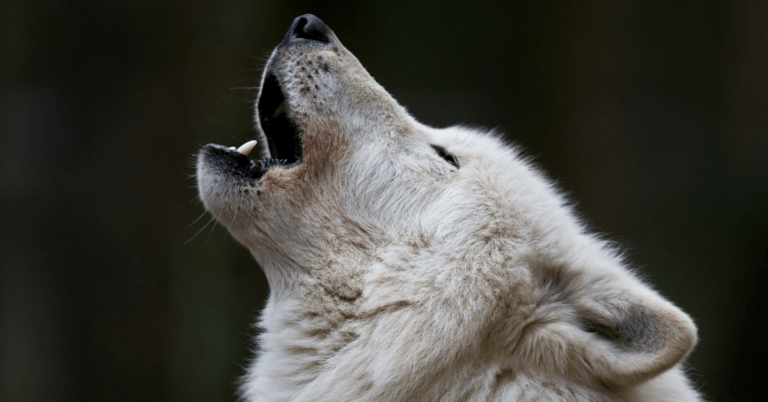By Lindy Browning | Contributor, Rocky Mountain Voice
Livestock raisers from the Western Slope are trying to plan ahead as Colorado Parks and Wildlife (CPW) prepares to relocate another 10 wolves on the western landscape this winter.
With calving season beginning in January, a season when livestock is most vulnerable and the wolves are looking for a meal in unfamiliar territory, the inherent conflict is seemingly unavoidable.
To that end, livestock growers met with CPW in Glenwood Springs to learn about hazing and wolf predation mitigation strategies, as well as risk-reducing programs offered by the organization.
CPW’s Adam Baca was joined by Dustin Shiflett from Colorado Department of Agriculture and Lauren Emerick from Colorado Wildlife Services, to provide information about best practices and programs that the state believes will be helpful in reducing damage and depredation of livestock.
A common misconception in the public square is that the wolf reintroduction program originated with CPW.
The truth is that voters on the Front Range voted on a ballot initiative that mandated the state to implement a policy that wildlife management professionals knew would create the very conflict being seen coming to fruition as a result of leaving wildlife management up to voters, who have neither the experience nor the knowledge of the unintended consequences of unleashing an apex predator on the livestock growers who feed America.
CPW is scrambling to try to reduce the conflict, and implement the will of the Front Range voters, while trying to help livestock producers on the west side of the state, who voted against the measure, with damage mitigation.
Baca, a wolf specialist, told the group, “Your local wildlife officer is who you should be talking to. They are the first line of contact for you. They know your area, and they know how to push your concerns up the chain of command.”
He went on to describe some of the known facts about risk factors. The lowest risk season of wolf predation is during the rut, when the ruminants (cows and sheep) have been eating well and not protecting very young calves or lambs, and are at their best health.
Likewise, the ruminants are most vulnerable during calving season and lambing season. This is the time when the cattle and sheep are grouped up and vulnerable because of their young, and the wolves are looking for an easy meal at that time of the year. It’s also a time when the wolf pups are beginning to hunt on their own, independent of the adults of the species.
Baca noted that a single wolf can and will regularly travel 150 miles in a three-day period when they are looking to establish their territory, so, as new wolves come in, they are moving over a large area looking for a suitable location and range where the habitat will support them. Calves and lambs are easy, vulnerable meals during this time of year.
After describing wolf movement trends, vulnerable times for producers, and risk factors, Baca began describing the mitigation that CPW and the partner organizations are utilizing with some degree of success.
Producers can request a site assessment at any time through CPW. There is no cost to producers for a trained CPW employee to come out and look over the property, whether it is a private ranch or summer grazing allotment. After a site visit, the CPW official will help the producer come up with a mitigation plan for that specific producer. Some strategies that can be implemented in the plan are range riders, fladry (Flagged fencing), electric fencing, scare devices such as lights, sound and pyrotechnics, and guardian dogs.
Baca also said that CPW and other state partners have programs available to producers to help with the added costs to growers to mitigate damage to their herds. Producers can apply to borrow fladry, share costs and obtain grants toward a certified range rider, obtain guard dog pups at no cost to the producer, learn best practices concerning carcass management so that the carcass does not attract predators, get assistance with non-lethal hazing techniques, and obtain injurious permits for injurious hazing techniques (paint guns).
The process for submitting a claim to CPW for the loss of an animal was also discussed. Many of the livestock producers do not want their names available to the public, because they have already seen harassment and trespassing by people who identify as activists after a reported kill or damage to their stock.
Several attendees at the meeting said they wished that CPW could give them real-time information about the location of any collared wolf as it would be helpful in knowing when and where to be, in order to utilize legal means to protect their livelihoods. Baca told them that they just don’t have that technology yet, and that even CPW only gets an update every four hours.
One of the attendees who came from Gunnison said during a break, “This just isn’t making a lot of sense to me. When the state is a billion dollars in debt, why are we spending millions in taxpayers’ dollars to import an apex predator, which then costs millions of dollars from the Colorado taxpayer to reduce the impacts to one of the largest revenue-generating businesses in Colorado?”
Because of the above mentioned harassment from the public, the names of the private individuals in attendance at the meeting are not being given in this article.

